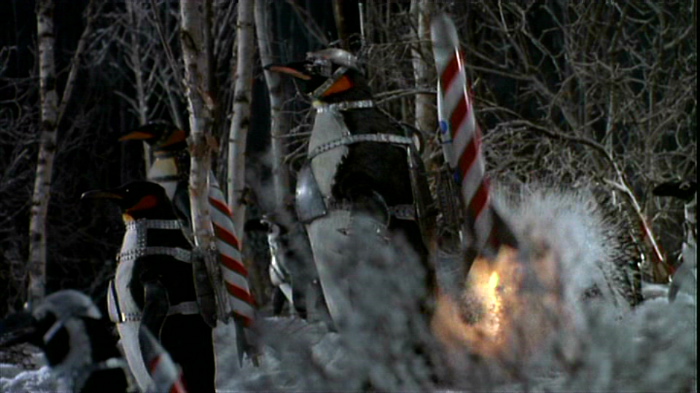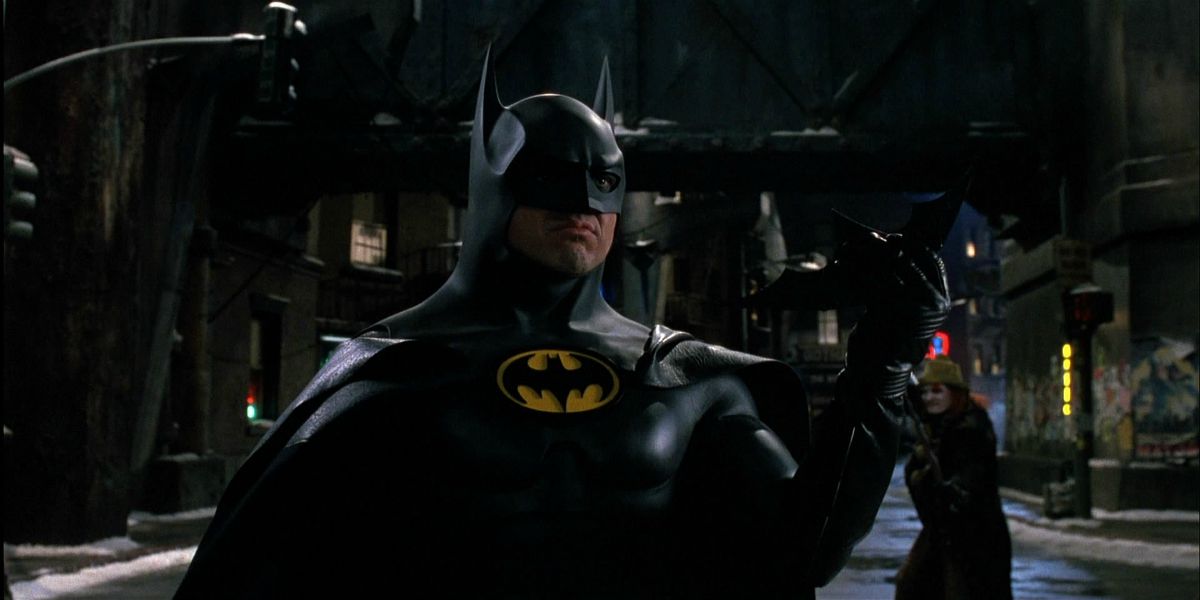The core of any story is the set of characters that comprise it. Strong and interesting characters are what drive any plot and allow the audience to connect with the story. This is especially true in the case of the Batman lore. Batman is perhaps the most relatable out of any of the DC superheroes. Despite the outlandish nature of comic books, Batman manages to employ characters that reflect real human struggles as well as characterizations. When Batman reached the silver screen, films had the tremendous responsibility of adapting those same characters for a wider audience. Today, Batman has reached unimaginable heights as cinema’s most celebrated solo comic book hero. However, this was not always the case. Tim Burton’s 1992 Batman Returns serves as a cautionary tale of an almost complete disrespect to the source material and butchering of characters. I firmly believe that next to the loathed Batman and Robin, this film fails at characterization in nearly every way possible.
The Penguin

Let’s start with the villain of the film, Oswald “Penguin” Cobblepot played by Danny Devito. This character is portrayed at such a cartoonish and disgusting level, I’m surprised it wasn’t a Saturday Night Live parody skit. The comic book version of Penguin is a greedy, intelligent, wealthy, and a powerful businessman who rules much of Gotham’s corrupt criminal underworld. On the surface, he’s a formal gentleman with class, but underneath he is essentially a supervillain mob boss. The film, however, decides to turn Penguin into a grotesque, perverted, and psychopathic murderer with no clear purpose.
Penguin’s behavior is violently erratic to the point of insanity (i.e. he bites a campaign staffer’s nose off in full view of his supporters) and his motivations for destroying Gotham are comically nonsensical. When his plan to rule Gotham is thwarted by Batman, Penguin then resorts to plan B, which is…. to kill the first child of every wealthy family in the city. He believes that his parents’ attempt to murder him as an infant logically means that all rich families must be punished. You do not have to be an avid comic book reader to find this the most laughably stupid character motivation for such an extreme action. The film, of course, does not stop there. Plan C of Penguin’s master scheme is the classic supervillian clichéd plan: Destroy the city! While this is, of course, even more ridiculous, what pushes it over to the realm of pure absurdity is how Penguin executed his plan: By marching an army of real penguins armed with explosive devices. I only wish I was making this up.

Penguin’s character is supposed to be the perfect foil to Bruce Wayne. While Penguin misused his wealth for personal gain, stepping on those in his way, Bruce used his riches to aid those less fortunate as well as to supplement his crime fighting abilities. One kept the city for perpetual decadence while the other sought to bring it to prosperity and stability. Batman Returns instead interprets the Penguin as an insane homicidal monster, rather than a calculated man with a purpose.
Catwoman
Michelle Pfeiffer’s portrayal of Catwoman, while to this day is hailed as the greatest interpretation of the character, is still not without its faults. What is never discussed by the fans of this film is how utterly outrageous her origin story is. Selina Kyle is thrown out of a 20 something story building and falls to her death. How does she become Catwoman? A band of kittens lick her till she comes back to life, of course! She then has newfound fighting abilities (for no real reason) and proceeds to vandalize stores. Perhaps the most baffling part of this character is her motivation for hating Batman, and plotting with the Penguin against him. She first attacks him, unprovoked, and then vows to kill him…after he saves her life. She then declares her hatred for Batman for knocking “me off a building just when I was starting to feel good about myself.” In no way did Batman cause her any lasting harm, and he only fought back in self defense. Her motivations to kill him makes about as much sense as a hemophiliac entering a boxing match.
Batman Returns also seems to have misunderstood Catwoman’s relationship with Batman. The dynamic between the two in the comics is that of mutual attraction stemmed from expressing who they truly are. Many argue that Batman is who Bruce Wayne is on the inside and that “Bruce Wayne” is simply a front. The appearance of a care-free and spoiled womanizing billionaire is an act to fool the public so that his identity as Batman is not revealed. As such, it is not often that Bruce finds meaningful relationships with women who see him for who he really is. That is the very reason why Catwoman and Batman fall for one another. They live a life that most people can never relate to. So, it is a glaring mistake on the film’s part to make Selina and Bruce fall in love with their civilian, non-true selves in what amounts to generic movie romance. Catwoman and Batman fall in love with each other first, only then do they reveal their real names as Selina and Bruce; not the other way around.

To the credit of the actors, the problems arise primarily from how the script was written for each character. When Batman literally murders a criminal by dumping him in a sewer with a live pack of dynamite, it is evidently clear that script writer Daniel Waters paid no attention to the source material.
For a film titled Batman Returns, the film has very little to do with Batman or Bruce Wayne and more to do with the incredibly ridiculous plans of his goofy villains. For a film celebrated for its supposed “excellent” character interpretation, it misses the mark by a mile.

